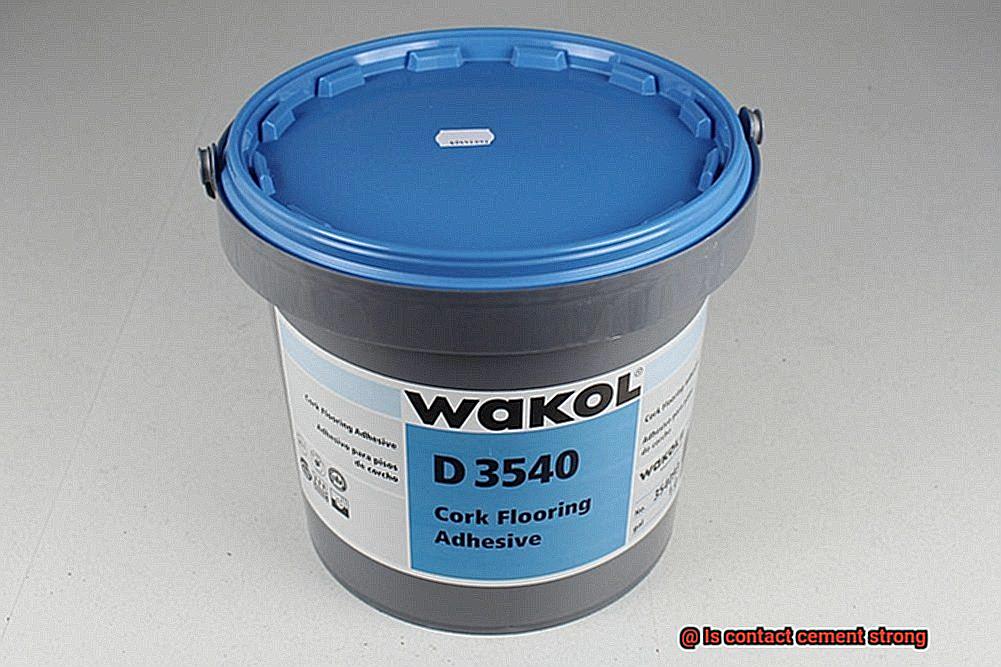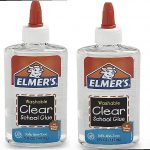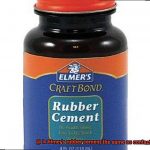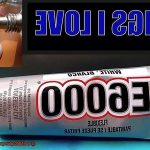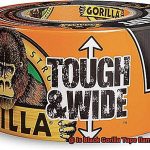Have you ever found yourself knee-deep in an artsy project or tackling a home improvement task, only to wonder about the true strength of contact cement? Well, today we’re delving deep into the captivating realm of this adhesive wizardry to uncover its mind-boggling power and unmatched bonding abilities.
So strap on your safety goggles and grab that trusty tube of contact cement, because we’re about to embark on an adhesive adventure like no other.
What is Contact Cement?
Contents
- 1 What is Contact Cement?
- 2 Advantages of Contact Cement
- 3 How Does Contact Cement Work?
- 4 Strength of Contact Cement
- 5 Factors Affecting Bond Strength
- 5.1 Surface Preparation: The Foundation of Success
- 5.2 Material Compatibility: The Harmonious Dance
- 5.3 Application Technique: The Artistry Unveiled
- 5.4 Drying and Curing Time: The Patience of Virtue
- 5.5 Temperature and Humidity: Nature’s Mischievous Whims
- 5.6 Thickness of Adhesive Layer: The Balance Unveiled
- 6 Enhancing Bond Strength
- 7 Versatility of Contact Cement
- 8 Common Applications for Contact Cement
- 9 Conclusion
Contact cement is an adhesive that stands out for its exceptional strength and versatility. Whether you’re a woodworking enthusiast, a construction professional, or someone who appreciates a reliable bond, contact cement should be on your radar. In this article, we will explore the properties and uses of contact cement, revealing its unique characteristics that make it a go-to choice for many projects.
Unveiling the Power of Contact Cement:
Contact cement creates a strong bond between different materials. Unlike other adhesives, it is applied to both surfaces being bonded together, resulting in an instant and permanent connection. Its secret lies in the solvents and rubber or resin components that work harmoniously to form a flexible and durable bond.
Versatility Unleashed:
Contact cement adheres to various materials like wood, metal, plastic, laminate, and fabric. This broad range of applications makes it ideal for woodworking projects, bonding countertops or laminates, repairing upholstery, or assembling metal structures.
Speedy Results:
Time is crucial in any project, and contact cement understands that perfectly. With its quick drying time, typically within minutes of application, you can enjoy fast and efficient work without compromising quality. Say goodbye to long waiting periods or clamping requirements – contact cement ensures expedited progress.
Unyielding Strength:
The strength of contact cement is one of its standout features. When properly applied and cured, it forms a bond that is resistant to heat, water, and chemicals. This robustness makes it suitable for both indoor and outdoor use, providing peace of mind in environments where durability is paramount.
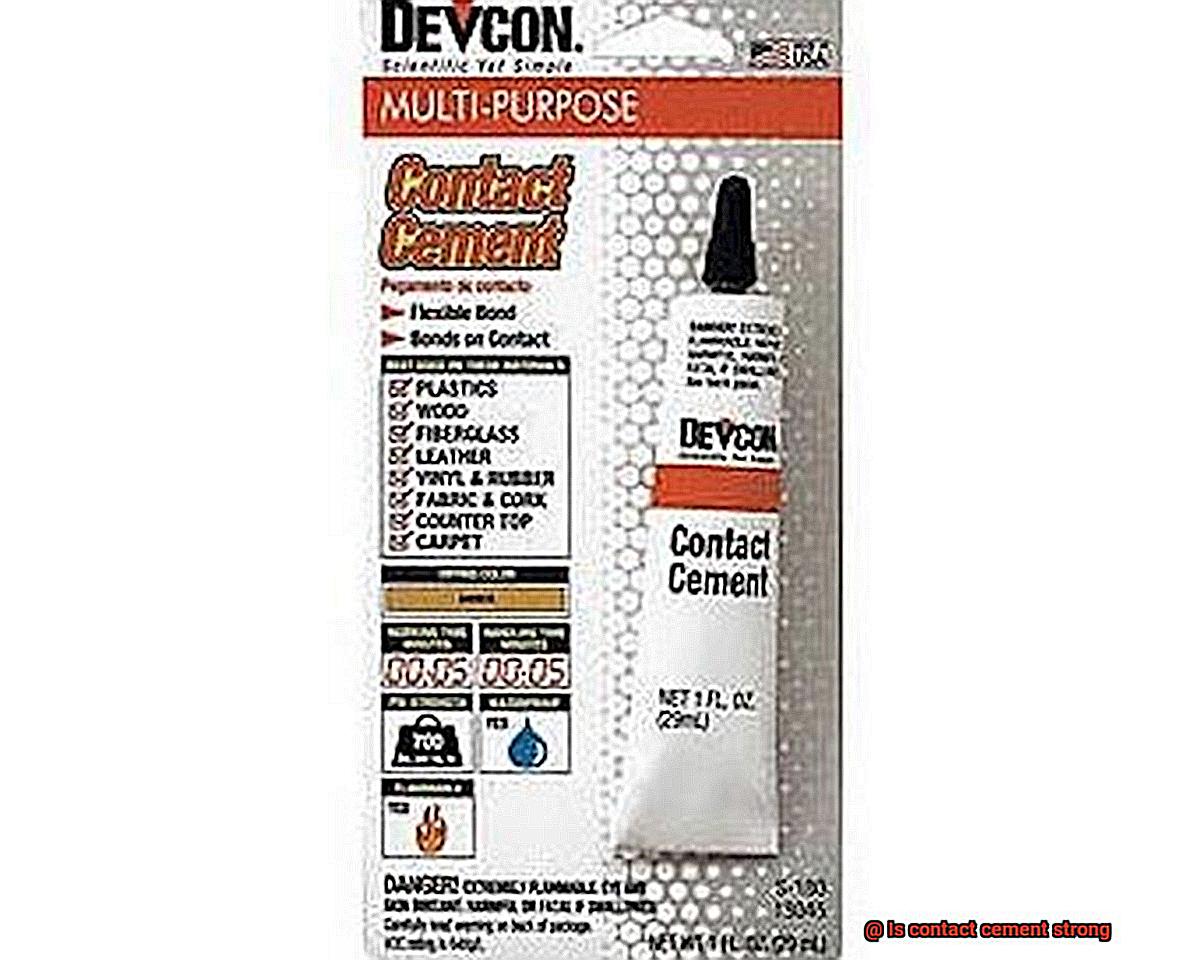
Factors to Consider:
While contact cement boasts impressive adhesive capabilities, it’s important to consider factors that impact its overall strength. The quality and type of adhesive, as well as proper surface preparation, play a crucial role in achieving optimal results. Following the manufacturer’s instructions diligently ensures a bond that will stand the test of time.
Advantages of Contact Cement
Contact cement is a glue that means business. It’s a powerful adhesive that offers a range of advantages, making it the go-to choice for professionals and DIY enthusiasts. From its incredible bonding power to its convenient application process, contact cement has it all.
First and foremost, let’s talk about the amazing bonding power of contact cement. No matter if you’re working with wood, plastic, metal, or even fabric, this adhesive creates a strong and durable bond between surfaces. Whether you’re repairing furniture or working on a DIY project, contact cement can handle it all.
But what really sets contact cement apart is its ease of use. Unlike other glues that require mixing or precise application techniques, contact cement can be applied directly to the surfaces you want to bond. It’s as simple as spreading a thin, even layer on both surfaces, waiting for it to dry until it becomes tacky, and then firmly pressing them together. The bond forms instantly, saving you time and effort.
Versatility is another advantage of contact cement. It works wonders on different materials like wood, laminate, leather, rubber, and many more. So whether you’re installing countertops or unleashing your creativity with unique crafts, contact cement won’t disappoint.
But what about heat and water resistance? Rest assured, contact cement has got you covered. Once fully cured, it forms a waterproof bond that can withstand moisture and humidity without compromising its strength. And did I mention it’s resistant to high temperatures too? That makes it perfect for any project where heat resistance is required.

Here’s a bonus advantage: no clamping required. Unlike some other glues that demand clamping or pressure during the bonding process, contact cement doesn’t need any clamping once the surfaces are pressed together. This convenience is especially handy for large projects or areas where clamping may pose a challenge.
Last but not least, contact cement boasts an impressive shelf life. You can buy larger quantities and store them for an extended period without worrying about them drying out or losing their effectiveness. This makes it a cost-effective choice for both professionals and hobbyists.
How Does Contact Cement Work?
When it comes to creating strong and durable bonds between surfaces, contact cement is the glue that means business. Whether you’re a professional or a DIY enthusiast, understanding how this powerhouse adhesive works can help you make the most of its incredible bonding power. In this article, we will delve into the science behind contact cement and explore its unique characteristics that make it a versatile and reliable choice for various applications.
Chemical Reaction:
Contact cement works by creating a chemical reaction. When applied to surfaces, the adhesive contains solvents that evaporate, leaving behind a layer of sticky substance. This sticky layer is crucial as it allows the adhesive to adhere effectively to different materials. As the solvents evaporate, they create a strong bond between the adhesive and the surfaces being bonded.
Versatile Bonding:
One of the standout features of contact cement is its ability to bond both porous and non-porous materials. From wood and metal to plastic, fabric, and even leather, contact cement can create a strong bond between diverse surfaces. This versatility makes it an indispensable adhesive for a wide range of projects, from woodworking and construction to automotive repairs and crafts.
Application Process:
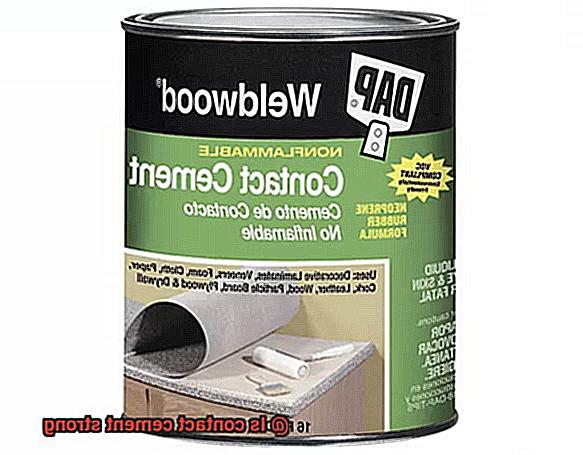
To achieve optimum bonding strength, it is vital to apply an even layer of contact cement on both surfaces. The adhesive can be applied using a brush or a roller, ensuring complete coverage on each surface. After application, the surfaces should be left to dry for a few minutes until they become tacky. This tackiness indicates that the adhesive is ready for bonding.
Pressing for Perfection:
Once the surfaces are tacky, they can be firmly pressed together to create a bond. It’s important to align the surfaces correctly before pressing them together since contact cement bonds quickly and strongly. Once the bond is made, repositioning or adjusting the materials becomes challenging. Applying pressure evenly across the bonded surfaces ensures maximum contact and enhances the bond strength.
Unyielding Strength:
The formidable strength of contact cement lies in its chemical composition and bonding mechanism. The adhesive forms strong molecular bonds with both surfaces, resulting in a durable and long-lasting bond. This makes contact cement ideal for applications where a permanent and reliable bond is required. Whether it’s holding together two pieces of wood or attaching laminate sheets to countertops, contact cement provides a bond that can withstand the test of time.
Resistance to Heat and Moisture:
Contact cement stands tall even in the face of heat and moisture. Once dried and cured, it can withstand high temperatures without breaking down or losing its bond strength. Additionally, it is resistant to water and moisture, making it suitable for outdoor applications or areas exposed to humidity. This resistance ensures that the bond remains intact, even in challenging environments.
Strength of Contact Cement
Glue enthusiasts and craft connoisseurs, gather ’round. Today, we embark on a journey into the captivating world of contact cement, where we will uncover the mysteries behind its extraordinary strength. Whether you’re a woodworking wizard or a construction guru, understanding the factors that contribute to the robust bonding properties of contact cement will undoubtedly elevate your adhesive prowess to new heights.
So, what makes contact cement so special? It all comes down to its unique composition. Picture a harmonious blend of solvents, synthetic rubber, and resins working in perfect unison to create an adhesive powerhouse. This dynamic combination forms a bond that is both instantaneous and permanent, eliminating the need for cumbersome clamps or other holding mechanisms. With contact cement, your projects will come together effortlessly and stay together for good.
But wait, there’s more. Contact cement is not just your average adhesive; it is a versatile master of bonding. From wood to metal, plastic to fabric, this adhesive effortlessly adheres to diverse surfaces, making it a go-to choice for myriad applications. Whether you’re working on a delicate crafting project or tackling a heavy-duty construction job, contact cement has got you covered.
Now, let’s talk application technique – an essential aspect that greatly influences the strength of contact cement. To achieve maximum bonding strength, precision is key. It is crucial to apply an even coat of adhesive to both surfaces and allow it to dry completely before bringing them together. This meticulous process ensures a rock-solid connection that can withstand even the toughest challenges.
But can contact cement stand up against external factors? Absolutely. This mighty adhesive boasts impressive resilience against heat, moisture, and chemicals. Come rain or shine, indoor or outdoor projects, contact cement remains steadfast, ensuring your bonds stand the test of time.
Speaking of strength, let’s not forget about shear strength and durability. When it comes to heavy loads and relentless stress, contact cement truly shines. Its exceptional shear strength guarantees long-lasting adhesion that won’t buckle under demanding circumstances. No matter how tough the job, contact cement is up for the challenge.
Now, before we wrap things up, let’s address a word of caution. While contact cement offers remarkable strength, it’s important to consider certain factors that can influence its efficacy. Surface texture, porosity, and flexibility of the materials being bonded can impact the overall bonding strength. Therefore, it’s wise to conduct a small test before diving headfirst into extensive applications.
Factors Affecting Bond Strength
Before you embark on your next masterpiece, let’s delve deeper into the factors that can significantly influence the bond strength of this adhesive powerhouse.
Surface Preparation: The Foundation of Success
Think of surface preparation as the sacred ritual that lays the foundation for triumphant bonding. Just as a painter prepares their canvas meticulously, you must ensure that both surfaces you’re bonding are pristine—clean, dry, and free from any pesky contaminants. Dust, oil, grease, or moisture can serve as treacherous adversaries, weakening the bond and sabotaging proper adhesion. Equip yourself with a trusty rag and embark on a thorough wipe-down before diving into the realm of contact cement.
Material Compatibility: The Harmonious Dance
Contact cement is indeed versatile, but not all materials engage in harmonious bonding. Take heed and ensure that the adhesive is compatible with both surfaces you seek to unite. Some materials may demand specific types of contact cement or additional primers to amplify the bond strength. Remember, compatibility is the key to forging an enduring connection—a connection that defies time and withstands the tests of wear and tear.
Application Technique: The Artistry Unveiled
Ah, behold the artistry of applying contact cement. In this realm, evenness reigns supreme. Employ a brush or roller to execute an even and consistent layer of adhesive on both surfaces. Any hint of uneven application or excessive adhesive can unravel your dreams of boundless strength—the bond may weaken or suffer from adhesive squeezing out under pressure. Thus, take your time and spread that glue with finesse, for it is the path to adhesive prowess.
Drying and Curing Time: The Patience of Virtue
In the realm of bond strength, patience dons the mantle of virtue. Grant the adhesive the respite it deserves, allowing it to dry for the specified time prescribed by the manufacturer before joining the surfaces together under pressure. Curing time, on the other hand, unveils the true potential of the bond—the time required for it to reach its zenith of strength. Trust in the process and let time weave its magic, yielding a bond that defies all expectations.
Temperature and Humidity: Nature’s Mischievous Whims
Mother Nature, with her mischievous whims, can be a formidable adversary when it comes to bond strength. Extreme temperatures can unleash havoc upon the adhesive, rendering it brittle or excessively pliable. High humidity levels play their part in slowing down the drying and curing process, while low humidity may birth weaker bonds. Keep a vigilant eye on the weather forecast and adhere to guidelines that pave the way to optimal bond strength.
Thickness of Adhesive Layer: The Balance Unveiled
In the realm of contact cement, balance emerges as an undying ally. Applying too much adhesive births feeble bonds, as excessive glue may not fully dry or cure—sacrificing security for quantity. Conversely, applying too little adhesive leads to insufficient coverage and adhesion—a frail connection that succumbs to adversity. Seek solace in the recommended thickness guidelines bestowed by the manufacturer—the path to unyielding bonding perfection.
Enhancing Bond Strength
When it comes to bonding materials, contact cement is a popular adhesive known for its exceptional bond strength. However, did you know that there are techniques and factors that can further enhance this remarkable strength? In this blog post, we will explore the world of contact cement and delve into how surface preparation, application technique, environmental conditions, material compatibility, and the use of primers and activators can elevate bond strength to new heights.
Surface Preparation: A Clean Canvas for Masterful Bonding
Just as a clean canvas is crucial for a masterpiece, proper surface preparation is vital for a strong bond. Before applying contact cement, ensure surfaces are pristine and free from dirt, dust, or grease. Use mild detergent, water, or suitable solvents to clean them. To create better adhesion, roughen the surfaces with sandpaper, providing a textured grip for the adhesive.
Application Technique: The Art of Evenness
Applying contact cement evenly and in a thin layer on both surfaces is essential for optimal bond strength. Follow the manufacturer’s instructions regarding drying time diligently. Applying too much adhesive or neglecting sufficient drying time can compromise the bond strength.
Environmental Conditions: The Climate of Successful Bonding
Temperature and humidity play significant roles in the bonding process. Apply contact cement and allow it to dry under optimal conditions within the recommended temperature range. Extreme temperatures or high humidity can impact the drying process and weaken the bond.
Material Compatibility: The Perfect Pairing
Choosing the right type of contact cement for specific materials is vital for enhancing bond strength. Different contact cements are designed for various applications and materials such as wood, metal, or plastic. Using the appropriate type of contact cement optimizes bond strength.
Primers and Activators: The Catalysts of Exceptional Bonding
In some cases, primers or activators can further enhance bond strength. Primers strengthen adhesion between contact cement and porous materials or difficult substrates. Activators expedite curing for non-porous materials or substrates requiring instant bonding, enhancing overall bond strength.
Versatility of Contact Cement
Today, we embark on a journey through the diverse and versatile world of contact cement. This adhesive has gained fame for its ability to create strong and durable bonds between different materials, making it an indispensable tool in woodworking, leatherworking, and other crafts. So, don your aprons and let us explore the fascinating realm of bonding mastery.
Surface Preparation: Conquering Irregular Surfaces
Contact cement excels at bonding irregular surfaces and non-porous materials, effortlessly tackling challenges like fabric to wood or metal to plastic. Its versatility shines brightest when faced with diverse textures, turning any surface into a canvas for bonding excellence.
Application Technique: Instant Adhesion, Quick Results
Unlike other glues that require clamping or drying time, contact cement offers instant adhesion upon contact, making it perfect for projects that demand quick and reliable bonds. Its consistency allows for smooth application, ensuring an even layer for a strong hold. No more waiting around – get straight to work.
Environmental Conditions: Strength That Withstands All Climates
Contact cement is a glue that can withstand extreme temperatures without losing its adhesive properties. Whether your project faces intense heat or chilling cold, this adhesive remains steadfast, providing unparalleled durability. Mother Nature has nothing on the versatility of contact cement.
Material Compatibility: The Ultimate Pairing
Wood, metal, plastic, ceramic, leather, fabric – you name it. Contact cement boasts compatibility with an extensive range of surfaces. This flexibility opens up endless creative possibilities and allows you to tackle various projects with confidence. The only limit is your imagination.
Primers and Activators: Elevating Bond Strength
For those seeking extraordinary bond strength, primers and activators act as catalysts to enhance the performance of contact cement. They unlock the full potential of this adhesive, guaranteeing bonds that can withstand even the toughest challenges. Take your projects to the next level with the power of primers and activators.
Common Applications for Contact Cement
Contact cement, the adhesive magic that binds materials together, finds its application in a plethora of industries and crafts. Its versatility and reliability make it a go-to glue for professionals and DIY enthusiasts alike. Let’s explore the common applications where contact cement shines and showcases its remarkable bonding properties.
In the construction and woodworking industries, contact cement is a superstar. It is widely used to bond laminates, such as Formica or veneer, to surfaces like countertops or furniture. With contact cement, craftsmen can ensure that their beautifully crafted pieces stay intact, even with everyday use and abuse.
Flooring installation is another area where contact cement reveals its true potential. Whether it’s vinyl or rubber tiles, contact cement is the adhesive of choice. It creates a strong bond that keeps floors in place, even with heavy foot traffic. No more worries about loose tiles or accidents waiting to happen.
Automotive enthusiasts swear by contact cement as well. It is perfect for bonding upholstery materials like fabric or leather to seats or interior panels. With contact cement, you can rest assured that your car’s interior will remain stylish and intact, no matter how much you hit the road.
But wait, there’s more. Contact cement is also a staple in the world of crafts and DIY projects. Whether you’re joining fabrics, foam, leather, or even plastic, contact cement is your trusty companion. Its versatility knows no bounds, making it an essential adhesive for any crafting endeavor.
And let’s not forget about shoes and leather goods. Contact cement is often used to bond soles to uppers or attach different parts of a shoe together. With contact cement, your favorite pair of kicks will stay together through thick and thin.
Last but not least, contact cement finds its place in the installation of wall coverings. From wallpaper to wall panels, this adhesive provides a reliable bond that keeps everything securely in place, even in high humidity areas like bathrooms or kitchens.
mLhgAPlY7lw” >
Conclusion
Contact cement is undeniably strong.
Its adhesive properties are unmatched, making it an ideal choice for bonding various materials together. Whether you’re working on a DIY project or tackling a professional job, contact cement will not disappoint.
Its strength lies in its ability to create an incredibly strong bond that can withstand even the toughest conditions. From woodworking to construction, contact cement has proven time and time again that it is up to the task.
So if you’re looking for a reliable and robust adhesive, look no further than contact cement.

